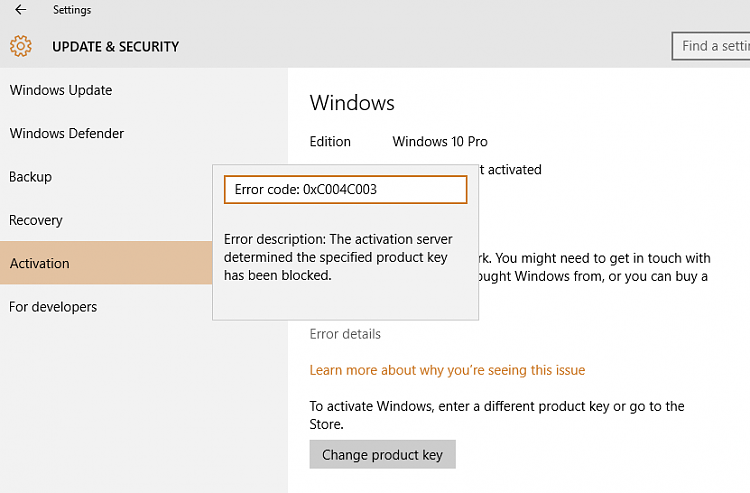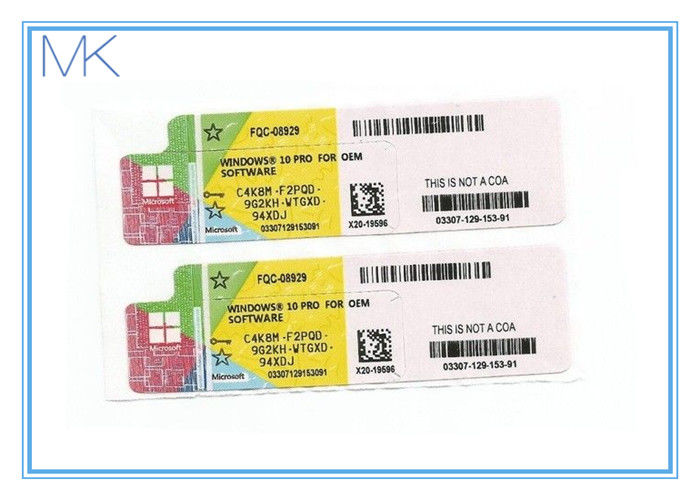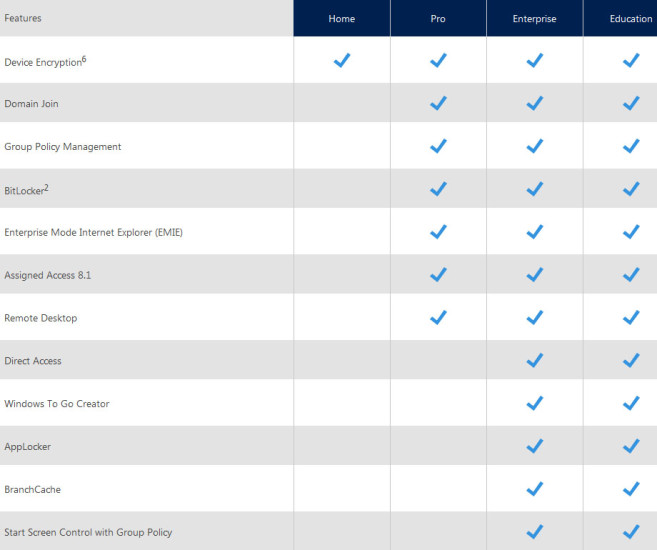Warren noted that he rarely used the Widgets panel or Microsoft Teams, citing that he preferred the weather display that later versions of Windows 10 offered, and didn't use Teams to communicate with his friends and family. He also acknowledged the expansion of Microsoft Store to include more "traditional" desktop applications. If your existing Windows 10 PC is running Windows 10 20H1 or later and meets the minimum hardware specificationsit will be able to upgrade to Windows 11. The upgrade rollout plan is still being finalized, but for most devices already in use today, we expect it to be ready sometime in early 2022. Not all Windows 10 PCs that are eligible to upgrade will be offered to upgrade at the same time.
To see if your PC is eligible to upgrade, refer to our knowledge base for a list of tested systems. Once the upgrade rollout has started, you can check if it is ready for your device by going to Settings/Windows Updates. Similar to how end users are notified when updates are available in Windows 10, end users will see an indication in the notification areas of the taskbar in the bottom right, that the upgrade is available. More information on how that is presented will be available at a later date. Additional desktop notification options may be also be added at a later date. Cunningham concluded that "as I've dug into and learned its ins and outs for this review, I've warmed to it more", but argued that the OS was facing similar "public perception" issues to Windows Vista and Windows 8.
Internet Explorer has been replaced by the Chromium-based Microsoft Edge as the default web browser like its predecessor, Windows 10, and Microsoft Teams is integrated into the Windows shell. Microsoft also announced plans to allow more flexibility in software that can be distributed via Microsoft Store, and to support Android apps on Windows 11 . Minor complaints aside, we like to see Microsoft giving its marquee software some attention.
For the last few years, the company has focused more on its Azure cloud computing services—justifiably given that business's profitability. Windows 11 brings slick new looks, useful new tools, updated default apps, extra capabilities, and performance advances. Perhaps that's enough to lure away some Chrome OS users or Mac users. Anyone with one of the newer chips should have no trouble installing Windows 11 via Windows Update. Microsoft made a downloadable ISO disk image file for the beta Insider version available for installing Windows 11, allowing in-place upgrades or clean installations on a PC or in a virtual machine.
A similar installation option is now available for the release version of Windows 11 via Microsoft's Download Windows 11 page. Some sources have reported that installing the OS with the ISO installer bypasses the system's hardware requirements, but that's not advisable as you may not get future OS updates if you install it on unsupported hardware. In October 2019, Microsoft announced "Windows 10X", a future edition of Windows 10 designed exclusively for dual-touchscreen devices such as the then-upcoming Surface Neo. Legacy Windows applications would also be required to run in "containers" to ensure performance and power optimization. Microsoft stated that it planned to release Windows 10X devices by the end of 2020. Original equipment manufacturers can still ship computers without a TPM 2.0 coprocessor upon Microsoft's approval.
Some third-party software may refuse to run on "unsupported" configurations of Windows 11. As part of the minimum system requirements, Windows 11 only runs on devices with a Trusted Platform Module 2.0 security coprocessor. According to Microsoft, the TPM 2.0 coprocessor is a "critical building block" for protection against firmware and hardware attacks. In addition, Microsoft now requires devices with Windows 11 to include virtualization-based security , hypervisor-protected code integrity , and Secure Boot built-in and enabled by default. The operating system also features hardware-enforced stack protection for supported Intel and AMD processors for protection against zero-day exploits. For new users, Windows 11 will seem like a good option with the new design.
You get rounded corners, a departure from the sharp edges we've seen in Windows for a long time. The Start Menu is now cleaner, featuring pinned apps and a recommended tab that shows you files based on your recent usage. The desktop more or less stays the same, but the right-click menu gets a simplified look, with the most common options like cut, copy, paste, and rename, at the top in a grid.
Perhaps the most important thing to know about the release of Windows 11 is that we should expect it to change significantly over the next few years. I've been using beta versions of Windows 11 for a month in the lead-up to writing this review, and it seems like every few days there's a minor new feature or redesigned app to check out. We may not see that feature fully realized in Windows until next year. File Explorer is a good example of Windows 11's new look, particularly its updated left panel controls and folder icons.
Note the simplified ribbon along the top, which is far less busy and distracting than the previous File Explorer's. The New button at the top left works for new folders or documents supported by your apps, and the same viewing options for files are available. The overflow menu offers file compression, selection, and Properties options, as well as the old Folder Options dialog. The right-click context menus, which have grown longer and longer over the years, get shorter, smarter, and clearer in Windows 11. At least 16 GB of RAM The basic system requirements of Windows 11 differ significantly from Windows 10.
Windows 11 only supports 64-bit systems such as those using an x86-64 or ARM64 processor; IA-32 processors are no longer supported. Thus, Windows 11 is the first consumer version of Windows not to support 32-bit processors . The minimum RAM and storage requirements were also increased; Windows 11 now requires at least 4GB of RAM and 64GB of storage. The compatibility list includes the Intel Core i7-7820HQ, a seventh-generation processor used by the Surface Studio 2, although only on devices that shipped with DCH-based drivers. Windows 11 SE was announced on November 9, 2021, as an edition exclusively for low-end devices sold in the education market, and a successor to Windows 10 S. It is bundled with applications such as Microsoft Office for Microsoft 365, Minecraft Education Edition, and Flipgrid, while OneDrive is used to save files by default.
Windows 11 SE does not include Microsoft Store; third-party software is provisioned or installed by administrators. The "Widgets" button on the taskbar displays a panel with Microsoft Start, a news aggregator with personalized stories and content (expanding upon the "news and interests" panel introduced in later builds of Windows 10). Microsoft Teams is similarly integrated with the taskbar, with a pop-up showing a list of recent conversations. A redesigned user interface is present frequently throughout the operating system, building upon Fluent Design System; translucency, shadows, a new color palette, and rounded geometry are prevalent throughout the UI.
For long-time Windows users, this update may cause a few annoyances. The start button resides in the center by default, although you can move it back to the left. Also, the right-click menu hides away some menu options, like some app-specific functions you get with apps like Winrar, or some other Windows options like Troubleshoot compatibility. Live Tiles are gone in favour of a snapshot view of pinned apps, recently accessed files as well as the option to restart or shutdown.
The good news is if a Start button in the centre is too much to handle, you can shift it back to the left-hand traditional view. What likely won't bother Windows traditionalists is that app corners, menus and File Explorer windows have been rounded off in Windows 11 rather than the typical square look of Windows 10. If the Microsoft Surface family of products isn't your style though, other brands like Dell, Asus and HP have all released pages online that specify what devices are Windows 11 ready.
Note that many won't come with the new operating system installed, but as they all meet the minimum system requirements, you can simply buy the laptop or 2-in-1 as normal and then update it yourself. As with Windows 10, you can let the company know what you'd like to see added to the software in a dedicated Feedback Hub app, and you may be surprised at how often it listens. Anyone can sign up for preview builds of the OS through the Windows Insider Program.
This lets you experience new features before they're available for general release. The next major update, 22H2 is expected to add Start menu options along with some redesigned stock apps. Windows 11 is available in two main editions; the Home edition, which is intended for consumer users, and the Pro edition, which contains additional networking and security features , as well as the ability to join a domain. Windows 11 Home may be restricted by default to verified software obtained from Microsoft Store ("S Mode").
Windows 11 Home requires an internet connection and a Microsoft account in order to complete first-time setup. In February 2022, it was announced that this restriction will also apply to Windows 11 Pro in the future. Citing security considerations, the system requirements for Windows 11 were increased over Windows 10.
While the OS can be installed on unsupported processors, Microsoft does not guarantee the availability of updates. Windows 11 removed support for 32-bit x86 CPUs and devices which use BIOS firmware. Usually, the Home edition is more than enough for anyone using a computer at home for web browsing, working with applications, and gaming. However, if you must have the advanced features, it's possible to upgrade from Home to Pro without having to perform a clean installation using a product key or through the Microsoft Store.
In addition to apps you can get in the Store, you also get standard apps like an updated Photos app, the FLAC-capable Groove Music player, Voice Recorder, two Paint apps , Mail, Calendar, and so on. We can hope for the last two mentioned to be greatly improved as Windows 11 development progresses. In the initial release, we still have the existing apps, albeit with rounded corners, but new versions will be based on the excellent Progressive Web App versions of Outlook.com. Microsoft has already started including the updated Paint app (though I've started to enjoy the modern Paint 3D), as well as new versions of Notepad (with a dark mode!) and the Calculator.
You can use the PC Health Check app to determine if your device is eligible to upgrade to New Windows. Many PCs that are less than four years old will be able to upgrade to New Windows. They must be running the most current version of Windows 10 and meet the minimum hardware requirements. The remaining 67 LIP languages that are LXP-based will move to a self-service model, and can only be added by Windows users themselves via the Microsoft Store and Windows Settings apps, not during the Windows imaging process. Any user, not just admins, can now add both the display language and its features, which can help users in business environments, but these exact options for languages still depend on the OEM and mobile operator. In January 2021, it was reported that a job listing referring to a "sweeping visual rejuvenation of Windows" had been posted by Microsoft.
A visual refresh for Windows, developed under the codename "Sun Valley", was reportedly set to re-design the system's user interface. For those whose hardware does meet the minimum standards, the benefits of an upgrade might be hard to justify. Microsoft will release an updated version of its PC Health Check app before the Windows 11 launch. This will enable users to check if their PCs meet Windows 11 system requirements.
However, Microsoft will continue to support Windows 10 through Oct. 14, 2025. Users need to be connected to the internet to perform updates, download and use certain features. They also need Microsoft accounts and internet connectivity to set up their devices the first time they use Windows 11 Home edition. For starters, there's DirectX 12 Ultimate, which has the potential to make games even prettier with higher frame rates.
This latter point is a step up from the default SDR approach of older versions of Windows. For what feels like the longest time, Windows operating systems have had a taskbar down the bottom that has a Start button on the left. Windows 11 takes a MacOS-like approach to its position with a Start button in the middle of the screen and apps around it. Initially, this design logic was intended for the cancelled Windows 10X, meant to make the interface easier to navigate for dual-screen devices.
It also cleans up the entire tray area, removing the toolbar items in the far right. If the product key is recognized, you'll see a message letting you know you're upgrading your version of Windows. Before you start, ensure you've saved your work and any important files and close any open apps. Windows Widgets are back in Windows 11, accessible via the dock, with Microsoft touting AI-powered dynamic features that enable widgets, as with the Start menu, to change depending on the apps you're using and the time of day. On the touchscreen, you can slide from the left on the desktop to have widgets appear.
Even the newly-released AutoHDR feature is available on both Windows 11 Home and Pro editions. So it's safe to say that neither of the editions will disappoint you in terms of gaming performance. That said, Windows 11 Pro offers you a larger ceiling for hardware expansion. It supports up to 2 CPU sockets, 128 cores, and up to 2TB of RAM, whereas Windows 11 Home supports 1 CPU socket, 64 cores, and up to 128GB of RAM. Simply put, Windows 11 Home is more than enough for most users, even for hardcore gamers. For example, Windows 11 has new Contrast themes, redesigned closed caption themes, and AI-powered Windows Voice Typing.
The new OS also adds APIs for programming assistive apps, and even the Windows Subsystem for Linux now has accessibility options. Pinned app buttons (they're larger than icons but smaller than Windows 10's tiles) are at the top of its panel. Recent and frequent apps and documents are in a section below them.
The Start menu's new mini-tiles are still good for touch input, but you lose info that live tiles offer, annoying as those could sometimes be. Another quibble I have with the new Start menu is that it's harder to get to the All Apps view than in Windows 10. With that version of Windows, you can see all installed apps as soon as you open the Start menu; they're in a list on the left while tiles for your pinned apps are on the right. Legacy BIOS is no longer supported; a UEFI system with Secure Boot and a Trusted Platform Module 2.0 security coprocessor is now required. The TPM requirement in particular has led to confusion as many motherboards do not have TPM support, or require a compatible TPM to be physically installed onto the motherboard.
Task View, a feature introduced in Windows 10, features a refreshed design, and supports giving separate wallpapers to each virtual desktop. When a display is disconnected in a multi-monitor configuration, the windows that were previously on that display will be minimized rather than automatically moved to the main display. If the same display is reconnected, the windows are restored to their prior location.
Once you're up and running on Windows 11, the first thing you need to do is head to the Microsoft Store app and check for updates to ensure that you have the latest versions of all the pre-installed Windows 11 apps. Once that's done, you should also head to Windows Update in the new Settings app and check for updates there to ensure you have the latest drivers designed for Windows 11. You can refer to our knowledge base for a list of tested systems to determine if your device eligible to upgrade to Windows -11.
Many PCs that are less than four years old will be able to upgrade to Windows 11. They must be running 20H1 or later version of Windows 10 and meet the minimum hardware requirements to receive the Windows 11 upgrade. Upgrades to Windows 11 will begin to roll out late in 2021 and continue into 2022. During this time, we will be doing some behind the scenes testing and validating for your specific PC.
Windows Update will provide an indication if and when your PC is eligible. Windows 11 is a free upgrade, but the minimum system requirements are quite a bit higher than ever before. Microsoft calls Windows 11 the most secure Windows yet, and that tag comes at the cost of backward compatibility. Trusted Platform Module 2.0, aka TPM 2.0, is one of those requirements. There are ways to manually install Windows 11 on incompatible systems, but those include giving up on official future updates via Windows Update and/or modifying the Windows 11 ISO file to remove security checks.


























No comments:
Post a Comment
Note: Only a member of this blog may post a comment.